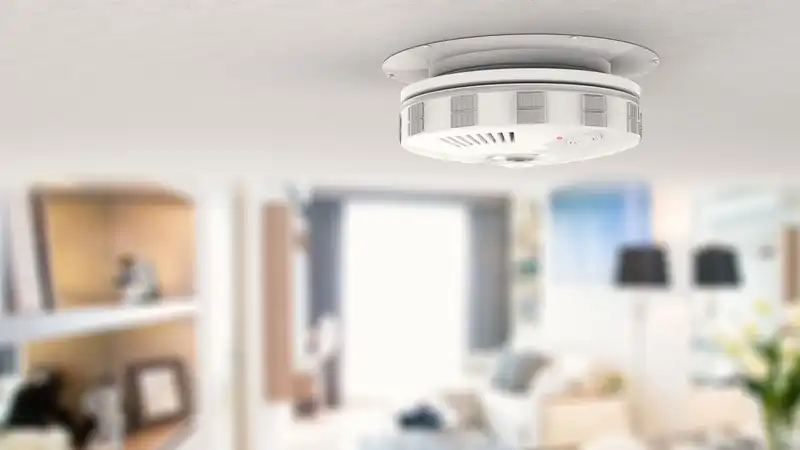I have the best smart home devices in my apartment. I've added various smart contact and motion sensors, but I couldn't bring myself to spend $149 for the excellent Nest Protect (the best smart smoke detector we've tested). Just recently, we installed a basic Kidde detector and it is working perfectly fine.
Nevertheless, this got us thinking about ways to monitor for smoke and carbon monoxide hazards while we are out and about. Traditional flood and smoke alarms have a loud siren that can save you in an emergency. Unfortunately, however, these alarms can only be heard when you are home. Smart Wi-Fi sensors connect to the Internet and call you with emergencies ranging from flooding to carbon monoxide leaks. Keep scrolling for three easy and affordable ways to connect your existing smoke detectors to your smart home.
The best smart speakers can recognize alarm frequencies and send notifications to your phone when an alarm goes off; you can create a routine that uses an automated "listen for beep" trigger on your Amazon Alexa speaker to receive alerts while you're out and about. This can also initiate automatic smart home actions such as flashing lights and announcements for free. Pay $59 for a year for Alexa Emergency Assist, and Echo will always passively listen for alarms and the sound of breaking glass. This service provides a better experience because it not only notifies you, but also pops up a button to send emergency services to your home immediately.
Apple HomePod's free sound recognition feature detects the frequency of smoke and carbon monoxide alarms in your home. It then sends a notification to your Apple Watch, iPhone, or iPad to let you know. Tap the notification to confirm there is no problem. To access this feature, click on the menu icon in the upper left corner of the main screen of the Home app. Scroll down to the list of device categories, select Safety and Security > Sound Awareness, and toggle Smoke and CO Alarm on.
Google's smart speakers and displays will also recognize alarms and broken glass if you pay a subscription. There is no free monitoring layer like the options above; Nest Aware costs a minimum of $8 per month, a bargain for those who use Google's smart security camera ecosystem, which also offers features such as extended video storage and facial recognition.
If you don't have a smart speaker or don't want to deal with one, there are other options: you can get a smart listening sensor like this one from Xsense ($29, Amazon). This gadget works with any system by accurately listening for specific alarm tone frequencies to prevent false alarms. Simply place it within a foot of an existing detector and it will passively listen for sirens.
Once triggered, the Zens app sends push notifications to up to 12 users. This alerts everyone in the home to the danger and allows them to check on the house. other manufacturers, such as Ring, also produce eavesdropping sensors, but they are not recommended by many. This is because these sensors often require the company's equipment and an active subscription.
The $35 Wyze Cam v4 ($35, Amazon) was named one of the best security cameras we used because of its advanced features: not only does it have AI subject tracking and facial recognition, but it can also detect alarm sounds and notify you instantly. This alarm sound detection feature is usually only found in high-end security cameras such as Arlo, Eufy, and Google's Nest Cam. This all-in-one budget security system is why I use Wyze Cams in my own home.
For just $3.99 a month, I can turn the camera into an alarm, with 24/7 live monitoring that dispatches emergency services without me having to check my phone. That way, I can see inside the house, have a live agent call emergency services if someone breaks in, and get notifications when smoke or CO detectors go off while I'm out.
.









Comments